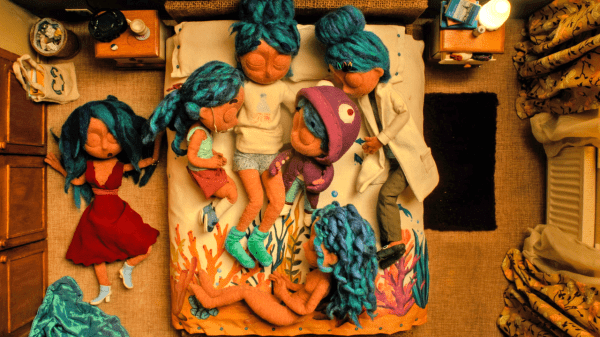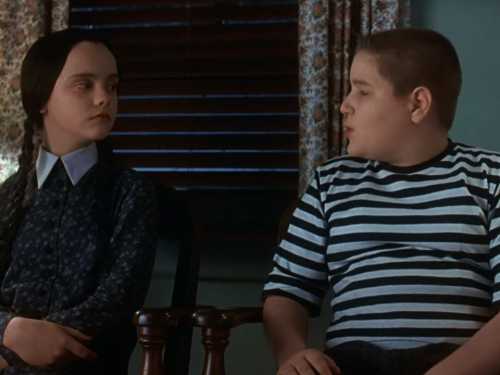
The film’s protagonist, Ruby, faces terrors: vivid memories of the most humiliating versions of her past selves, manifested in her apartment.
Ida Melum has trouble falling asleep in a silent room. And so does the protagonist in her animated short film “Night of the Living Dread.” Ruby, a young environmental scientist whose blue hair is tied into a messy topknot, lies face up in bed while listening to a man’s soothing voice as it guides her through a sleep meditation—just one part of her nighttime regimen, which also includes lavender room spray, a color-changing mood lamp, and bedtime reading such as “Little Miss Insomnia” and “This Book Will Make You Sleep.” But, when a power outage casts a deafening silence over her bedroom, she is left with only her racing thoughts. In a desperate attempt to find sleep without her usual aids, she tosses and turns, clutching her pillow to her chest and over her face, positioning her head at the foot of the bed, to no avail.
As Ruby faces the prospect of a sleepless night, we see something unrecognizable creep up behind her and tap her shoulder—the sense is that this film will be a scary one. But the ominous mood is fleeting, a vestige of the filmmaker’s earlier vision. Melum told me, “For a long time, I really tried to make it more of a heavy film, but then we kept coming back to a more lighthearted version.” When Ruby seeks out a weapon to fend off the intruder and ends up brandishing her vibrator, the tone of the film becomes clear.
The New Yorker Documentary
View the latest or submit your own film.

The film, which took more than a year to make, was shot in stop-motion—a medium that lends itself to a warm sort of playfulness—and includes hand-drawn facial features. Melum described herself and her team as “massive control freaks,” and it’s a good thing that they are; this type of filmmaking requires incredible meticulousness. Ruby was made out of a T-shirt from Primark, a piece of fabric that allowed this character (and the rest of the film) to feel, as Melum notes, “humanoid but not freaky.”
Throughout the night, Ruby does face terrors: vivid memories of the most humiliating versions of her past selves, manifested in her apartment. Ruby’s anxiety drags her on a roller coaster of shame. Her various successes in school or at work hardly seem to matter as her brain whirls around, reminding her painfully of the time she got caught stuffing her bra or offending her co-worker with an ill-timed joke. There is no one box that Ruby fits neatly into; rather, she’s a medley of all of her experiences, even the most mortifying ones.
The film smartly illustrates the strange power of the shame spiral: the way that even the most mundane memories can suddenly become monstrous. Even though Ruby’s anxieties are painful, and sometimes painfully relatable, the silliness of animation makes it possible to laugh at them—so much so that maybe we can finally put them to bed.
Sourse: newyorker.com






